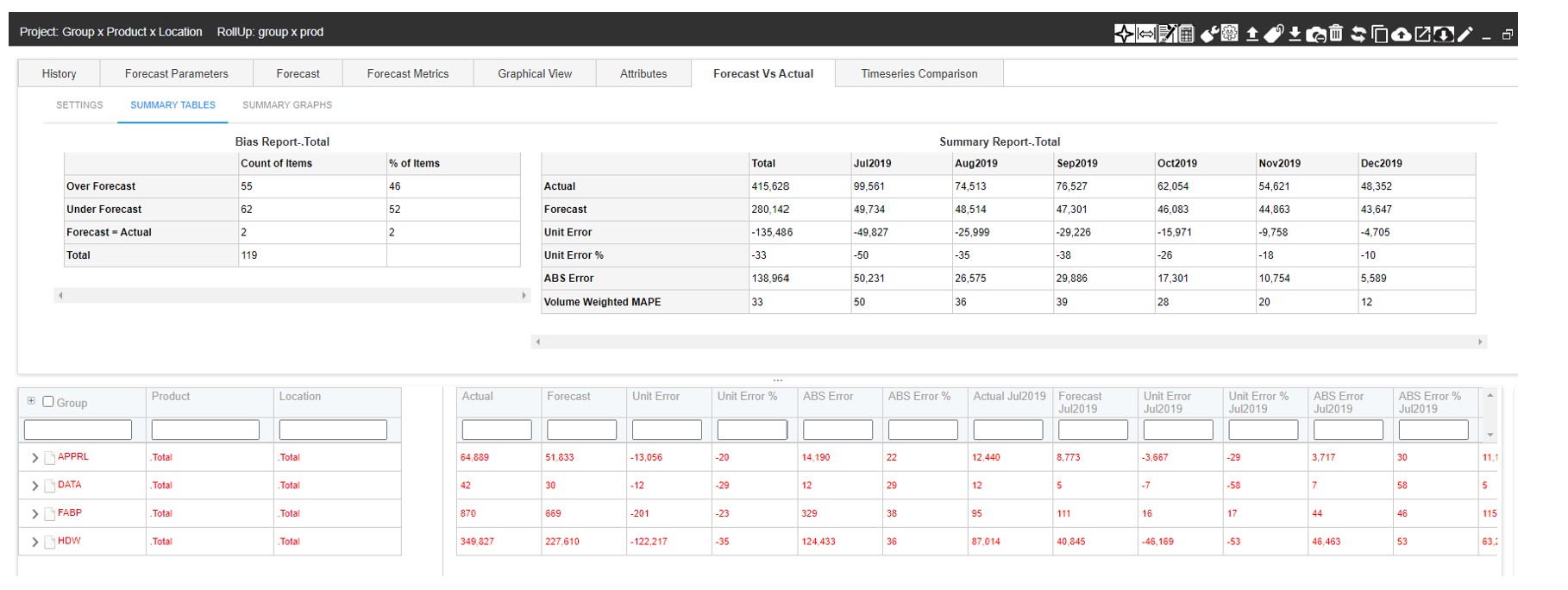Improve Forecast Accuracy, Eliminate Excess Inventory, & Maximize Service Levels
In this video, Dr. Thomas Willemain, co-Founder and SVP Research, talks about improving Forecast Accuracy by Managing Error. This video is the first in our series on effective methods to Improve Forecast Accuracy. We begin by looking at how forecast error causes pain and the consequential cost related to it. Then we will explain the three most common mistakes to avoid that can help us increase revenue and prevent excess inventory. Tom concludes by reviewing the methods to improve Forecast Accuracy, the importance of measuring forecast error, and the technological opportunities to improve it.
Forecast error can be consequential
Consider one item of many
- Product X costs $100 to make and nets $50 profit per unit.
- Sales of Product X will turn out to be 1,000/month over the next 12 months.
- Consider one item of many
What is the cost of forecast error?
- If the forecast is 10% high, end the year with $120,000 of excess inventory.
- 100 extra/month x 12 months x $100/unit
- If the forecast is 10% low, miss out on $60,000 of profit.
- 100 too few/month x 12 months x $50/unit
Three mistakes to avoid
1. Ignoring error.
- Unprofessional, dereliction of duty.
- Wishing will not make it so.
- Treat accuracy assessment as data science, not a blame game.
2. Tolerating more error than necessary.
- Statistical forecasting methods can improve accuracy at scale.
- Improving data inputs can help.
- Collecting and analyzing forecast error metrics can identify weak spots.
3. Wasting time and money going too far trying to eliminate error.
- Some product/market combinations are inherently more difficult to forecast. After a point, let them be (but be alert for new specialized forecasting methods).
- Sometimes steps meant to reduce error can backfire (e.g., adjustment).
RECENT POSTS

Why MRO Businesses Need Add-on Service Parts Planning & Inventory Software
MRO organizations exist in a wide range of industries, including public transit, electrical utilities, wastewater, hydro power, aviation, and mining. To get their work done, MRO professionals use Enterprise Asset Management (EAM) and Enterprise Resource Planning (ERP) systems. These systems are designed to do a lot of jobs. Given their features, cost, and extensive implementation requirements, there is an assumption that EAM and ERP systems can do it all. In this post, we summarize the need for add-on software that addresses specialized analytics for inventory optimization, forecasting, and service parts planning.

Head to Head: Which Service Parts Inventory Policy is Best?
Our customers have usually settled into one way to manage their service parts inventory. The professor in me would like to think that the chosen inventory policy was a reasoned choice among considered alternatives, but more likely it just sort of happened. Maybe the inventory honcho from long ago had a favorite and that choice stuck. Maybe somebody used an EAM or ERP system that offered only one choice. Perhaps there were some guesses made, based on the conditions at the time.

Leveraging ERP Planning BOMs with Smart IP&O to Forecast the Unforecastable
In a highly configurable manufacturing environment, forecasting finished goods can become a complex and daunting task. The number of possible finished products will skyrocket when many components are interchangeable. A traditional MRP would force us to forecast every single finished product which can be unrealistic or even impossible. Several leading ERP solutions introduce the concept of the “Planning BOM”, which allows the use of forecasts at a higher level in the manufacturing process. In this article, we will discuss this functionality in ERP, and how you can take advantage of it with Smart Inventory Planning and Optimization (Smart IP&O) to get ahead of your demand in the face of this complexity.


















